
PUMPA - SMART LEARNING
எங்கள் ஆசிரியர்களுடன் 1-ஆன்-1 ஆலோசனை நேரத்தைப் பெறுங்கள். டாப்பர் ஆவதற்கு நாங்கள் பயிற்சி அளிப்போம்
Book Free DemoThe Inception
Bandagan - a Persian name used for slaves who were purchased to perform military services

Slaves at work
Later these slaves were assigned the posting of governors and after some time they were raised to the status of sultans. Qutb-ud-din-Aibak, who was one among the slaves of Ghori, claimed the territories of him post the death of Ghori in 1206 and self-proclaimed himself as the ruler of Turkish territories in India. Thus, he laid the foundation of the Slave dynasty in India. The slave dynasty spanned 84years.
Mamluk dynasty: Slave dynasty is also known as Mamluk dynasty as Mamluk is an Arabic word meaning "Slave".
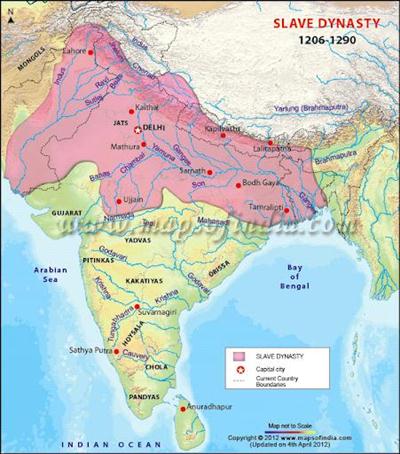
Empire of Slave dynasty
Reign of Qutb-ud-din-Aibak : (1206 - 1210)
Qutb-ud-din-Aibak started his rule by establishing Lahore as his capital which he later changed to Delhi. He conquered new territories, and at the same time, kept rebellions in check. His military campaigns witnessed the conquest of the central and western part of Indo- Gangetic plain.
“Lakha Baksh”: Qutb-ud-din Aibak was highly generous, so he was nicknamed Lakha Baksh Sultan
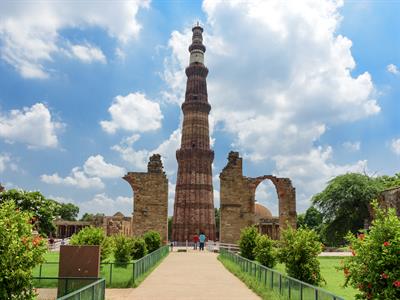
Qutb -Minar
Meanwhile, Bhaktiar Khalji was left with the conquest of the eastern Gangetic plain (which comprised areas of Bihar and Bengal).
Aibak built Quwwat-ul-Islam (Mosque) in Delhi and also laid the foundation stone for Qutub Minar, which he was unable to complete, and later completed by Iltutmish (his son-in-law and successor). Aibak died in 1210 from the injuries he acquired accidentally during a game of polo or chaugan.
“ Chaugan/Polo”: A game which is played by sitting on a horse
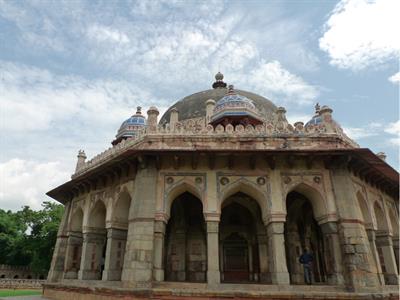
Quwaat-ul-Islam Mosque
Quwwat-ul-Islam: Mosque which was built by Aibak in Delhi, considered to be the oldest in India.
Reign of Iltutmish: (1210 - 1236)
Iltutmish, the son-in-law of Aibak, was chosen as the Sultan by the nobles as his son Aram shah displayed incompetence. Iltutmish, who served as the commander of the Aibak, later took resolute actions against rebels.Tanka and Jital: Iltutmish issued Silver and Copper coins, namely Tanka and Jital.
The Mongolian threat under Chengis Khan emerged during his period. He averted it tactically by denying shelter to Khwarezm Shah Jalal-ud-din, who Chengis Khan chased out.
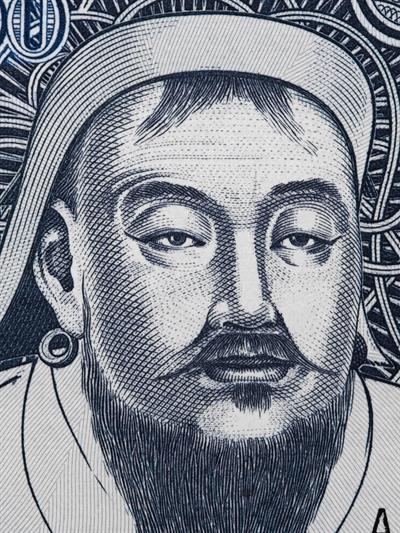
Chengis Khan – The Mongolian King
Iltutmish organised "Chahalgani- a select group of 40 Turkish nobles " to counter the invasion of the Mongols, also known as "The Forty".
The "Iqta - land grants to the military officials instead of their regular wage" were granted by Iltutmish.
The "Iqta - land grants to the military officials instead of their regular wage" were granted by Iltutmish.
Iqtadars: The Iqta ( land ) holder is known as Iqtadars, who collected revenue from the Iqta assigned to them to maintain their horses and troops.
He also formed another group of people under the name of " Muqti - who entitled to serve the sultan during the time of war ".
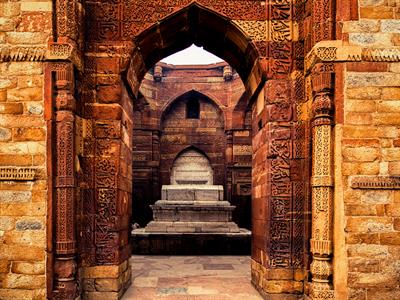
Tomb of Iltutmish – Delhi
The Qutb-Minar was completed during his reign, of which Aibak earlier laid the foundation before his death.